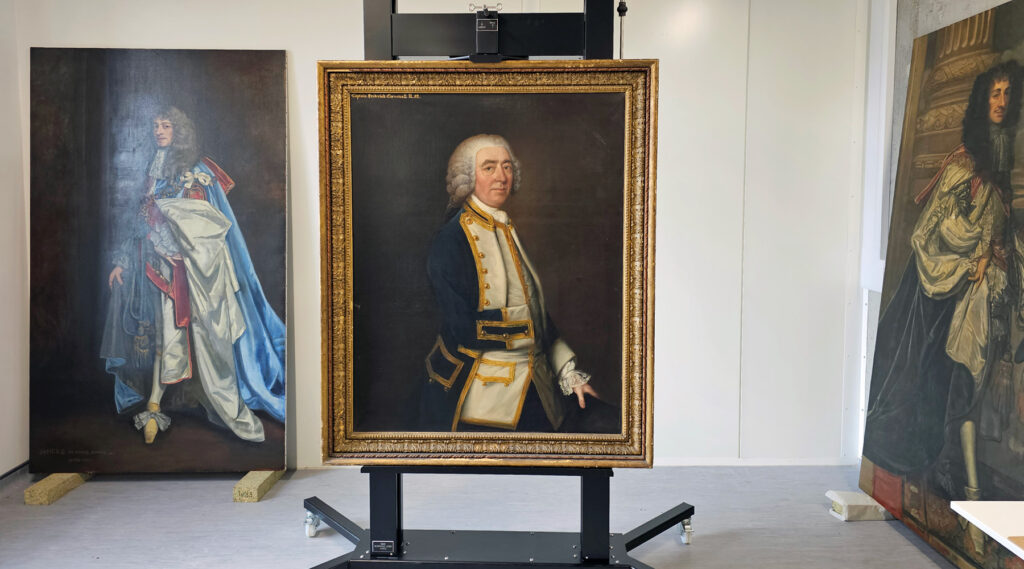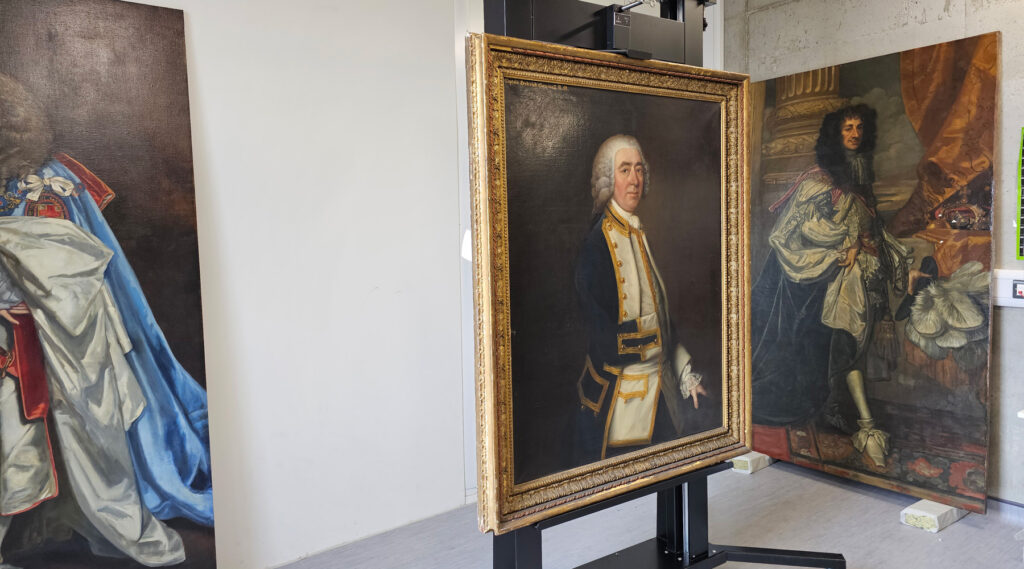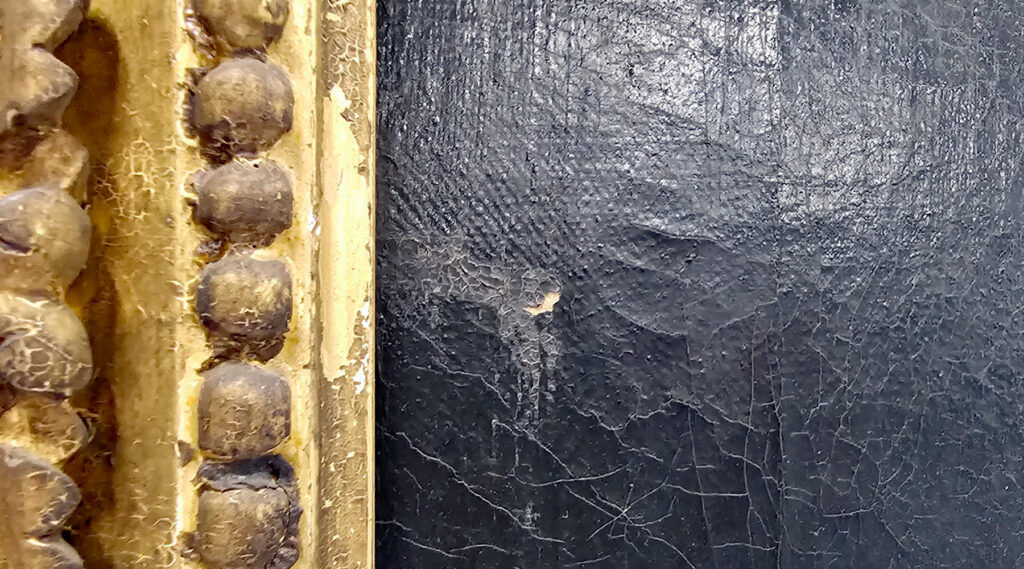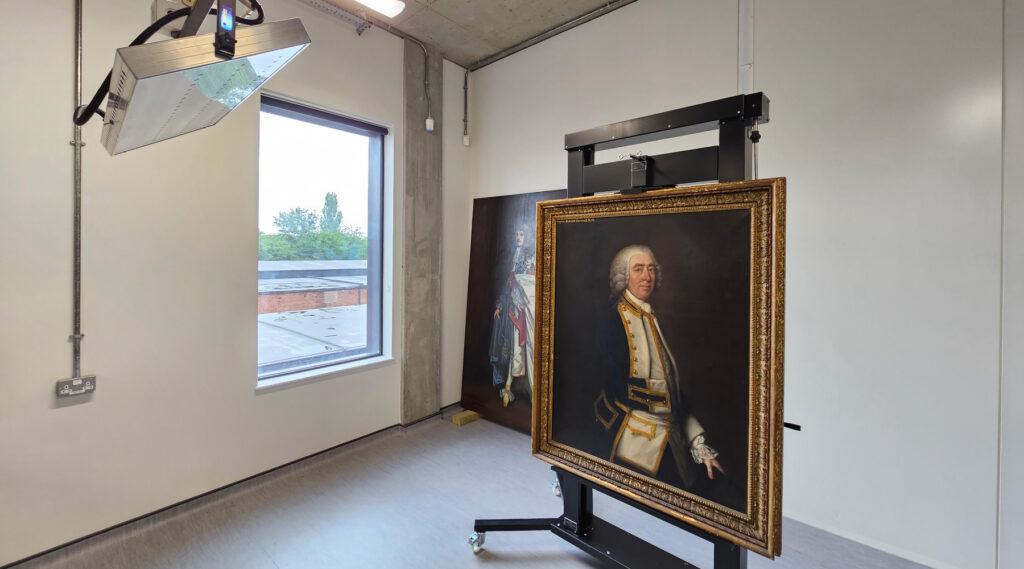A hitherto unknown painting by Thomas Gainsborough has been discovered in Greenwich, after spending decades in storage after it was donated to the National Maritime Museum in 1960.
The three-quarter length painting is of Captain Frederick Cornewall, and the Royal Museums Greenwich (RMG) is now planning to restore the painting ahead of putting it on public display next year.
The portrait, painted in 1762 had been attributed to Gainsborough by the previous owner, but when it was donated to the National Maritime Museum in 1960, the curator at the time didn’t think it was good enough to be a Gainsborough and put it into storage as labelled as a painting by an unknown artist.
Recent research though by art historian Hugh Belsey and RMG curators has led to the exciting reattribution to Gainsborough.
Historian, Belsey had discovered a photograph of Cornewall’s portrait from the early twentieth century when the painting was owned by the London dealers, Agnew’s. He then traced the painting through several sales to the collector, Edward Peter Jones, but here the trail went cold.
Unbeknownst to Belsey, Edward Peter Jones had donated the painting to the Greenwich museum in 1960.
It was not until 2022, when Belsey’s friend was looking through the National Maritime Museum’s collection catalogue, that Belsey became aware that the painting may be in their collection. Belsey requested to see the portrait in the museum stores earlier this year and on inspection of the painting, it became clear from the warm palette and unrivalled draughtsmanship that it was indeed a Gainsborough.
Belsey dated the painting to about 1762 when Gainsborough was working in Bath and it is an impressive example of his work from this period.
It’s currently sitting in the RMG’s conservation studios (which are open for tours), and even in its current unrestored condition, sitting in front of two other paintings, it’s easy to see the difference in the quality of Gainsborough’s skill as a painter. The other two paintings in the conservation studio, while of grander subjects looked flat and lifeless when compared to the Gainsborough painting in front of us.
In the portrait, Cornewall stands against a plain brown background in undress uniform and a bag wig. Gainsborough’s delicate brushwork is especially obvious in the most detailed areas of the picture, such as the lace cuff around Cornewall’s left wrist. Cornewall had lost his arm during the Battle of Toulon (1744) and Gainsborough highlights the injury, styling Cornewall as a courageous fighter. The sleeve of his coat is attached by a small loop to a button on his waistcoat in imitation of the traditional eighteenth-century pose where men were often painted tucking one hand into their waistcoat.
However, having been in storage as a minor painting, it’s suffered from some of the effects of that, and its own natural ageing, so the museum is fundraising to cover the cost of restoration so that it can go back on public display.
Although to the casual eye, the painting looks to be in pretty decent condition for something that’s over 260 years old, closer study shows where it has suffered over the years.
The painting is being pulled in the corners as the frame and canvas aren’t sitting comfortably, and the frame itself is in serious need of cleaning and reguilting. However, the main work will be removing the ageing varnish that was applied to the painting in the past and applying a new coat. That’s needed because varnish starts to take on a yellow tint as it ages, and that then obscures the details and the colours of the painting.
It’s a very delicate process though, as the conservators have to test slowly stronger solvents until they find one that can remove the varnish without damaging the paint, and only when they are right down to the very closest layer can they inspect the paint to see if it’s stable enough to remove all the varnish, or if they have to leave a vanishingly thin layer behind.
A modern varnish will be applied, and where older varnishes tarnish within 50 years, the modern versions could easily last more than a century before restoration is needed again.
There is also some damage to the painting, and as the paint is flaking in places, repairs are now urgently needed.
There’s also a layer of dust over the painting that needs to be removed, not just because it’s dusty and that dulls its appearance, but dust can actively damage the canvas over time, so it needs to be carefully removed to stop the canvas from decaying.
The RMG’s crowdfunding campaign will aim to raise £60,000 towards the conservation, which will return the portrait to something closer to Gainsborough’s original intentions in preparation for display at the Queen’s House next year.
More details about the conservation and fundraising are here.
Katherine Gazzard, Curator, said: “It is thrilling to be able to rescue this lost masterpiece from obscurity. Those of us lucky enough to see the portrait in the museum stores knew it was something special, but it was only with Hugh’s help that we were able to piece together the full story. We are excited about sharing the painting with the public, but it is currently too fragile for display. The fundraising campaign will enable us to perform the remedial work that the portrait desperately needs. Once the conservation is complete, the painting will hang in the Queen’s House, where our visitors will be able to enjoy this rediscovered masterpiece for themselves.”











Yes, families that own treasures are becoming more reluctant to donate them to museums as so many just disappear into storage.
One hopes that after restoration it will get at least a short loan to Gainsbourgh’s house museum in Sudbury, Suffolk.
Does it come in mauve?
Can Miss Babs check the stockroom?
Classic comment It made my coffee come down my nose. Thank you.😂